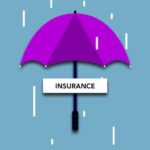Understanding Autonomous Vehicles
Autonomous vehicles, once a figment of futuristic imagination, are rapidly becoming a tangible reality in today’s automotive landscape. Understanding the implications of autonomous vehicles is crucial for both industry professionals and consumers.
The Rise of Autonomous Vehicles
The concept of autonomous vehicles entails a paradigm shift in the transportation sector, redefining the way we perceive and engage with automobiles. Understanding the various classifications of autonomous vehicles, ranging from semi-autonomous to fully autonomous, provides insight into the evolution of this groundbreaking technology.
Definition and Classification of Autonomous Vehicles
Autonomous vehicles are categorized based on their level of automation, as defined by the Society of Automotive Engineers (SAE). Understanding these classifications is vital in comprehending the capabilities and limitations of different autonomous driving systems.
Historical Background and Evolution of Autonomous Technology
Tracing the historical trajectory of autonomous technology unravels the milestones, challenges, and breakthroughs that have led to the present-day advancements. From early experiments to the integration of artificial intelligence and sensor-based systems, the evolution of autonomous technology is a testament to relentless innovation.
Key Features of Autonomous Vehicles
The technological components that empower autonomous vehicles encompass a sophisticated array of sensors, artificial intelligence algorithms, and seamless connectivity, all of which contribute to their autonomous functionality. Furthermore, examining the current and projected market trends sheds light on the widespread adoption and potential disruptions brought about by autonomous vehicles.
Levels of Automation (SAE Levels)
Dissecting the SAE levels of automation reveals the varying degrees of human involvement and system autonomy, serving as a fundamental framework for understanding the capabilities and limitations of autonomous driving technology.
Technological Components (Sensors, AI, Connectivity)
The intricate web of sensors, AI algorithms, and vehicle-to-everything (V2X) connectivity forms the bedrock of autonomous vehicle technology, enabling real-time decision-making, environmental awareness, and seamless communication with the surrounding infrastructure.
Current and Future Market Trends
Analyzing the current market landscape and projected trends provides valuable insights into the commercial viability, consumer acceptance, and regulatory adaptations shaping the future of autonomous vehicles.
With a comprehensive grasp of the foundational elements and evolutionary trajectory of autonomous vehicles, we can now pivot to explore their profound impact on the domain of auto insurance.
Impact on Auto Insurance
As autonomous vehicles redefine the traditional norms of transportation, they also catalyze a transformative impact on the landscape of auto insurance. This section delves into the evolving models, risk factors, and legal considerations that underpin the intersection of autonomous vehicles and insurance practices.
Evolving Insurance Models
The advent of autonomous vehicles necessitates a reevaluation of traditional auto insurance constructs, giving rise to new and adaptive insurance models calibrated to cater to the distinctive needs and risks associated with autonomous technology.
Traditional Auto Insurance vs. Autonomous Vehicle Insurance
Comparing and contrasting the conventional insurance frameworks with the emergent paradigms tailored for autonomous vehicles sheds light on the fundamental disparities in risk assessment, liability considerations, and claims adjudication processes.
New Risk Factors and Liabilities
The integration of autonomous technology introduces a spectrum of novel risk factors and liabilities, spanning from software malfunctions and cybersecurity breaches to intricate questions of liability attribution in the event of accidents or system failures.
Impact on Premiums and Underwriting
The shift towards autonomous vehicles triggers a cascade of implications on premium determinants and underwriting methodologies, reflecting the complex interplay between risk mitigation strategies, insurance affordability, and financial sustainability within the insurance industry.
Legal and Regulatory Considerations
Navigating the legal and regulatory terrains governing autonomous vehicles is paramount in deciphering the intricate nexus between insurance imperatives, compliance mandates, and the overarching legal framework governing autonomous vehicle deployment.
Federal and State Laws for Autonomous Vehicles
Scrutinizing the federal and state legislations delineating the operational parameters, safety standards, and insurance prerequisites for autonomous vehicles provides a vantage point to comprehend the regulatory nuances underpinning insurance obligations.
Insurance Requirements and Mandates
Unraveling the statutory insurance requirements and mandates tailored for autonomous vehicles elucidates the indispensable protocols and regulatory safeguards aimed at ensuring comprehensive protection for all stakeholders within the autonomous ecosystem.
By dissecting the interplay between autonomous vehicles and the insurance sector, we gain insight into the seismic transformations precipitated by autonomous technology, which reverberate across the insurance landscape. Now, let’s proceed to explore the pivotal aspect of “Coverage for Autonomous Vehicles” in the next section.
Coverage for Autonomous Vehicles
In the realm of autonomous vehicles, delineating the contours of comprehensive insurance coverage assumes paramount significance, necessitating a nuanced exploration of the multifaceted insurance products tailored to encompass the distinct risks and operational dynamics inherent to autonomous technology.
Comprehensive Coverage Analysis
Engaging in an in-depth analysis of insurance coverage for autonomous vehicles unveils an array of pivotal considerations, spanning from collision and property damage coverage to specialized provisions addressing the unique attributes of autonomous driving modes.
Collision and Property Damage Coverage
The design and implementation of insurance coverage tailored for autonomous vehicles inherently encompass provisions to address potential collision incidents and property damage, aligning with the distinctive operational landscape and risk factors associated with autonomous driving environments.
Liability Coverage in Autonomous Driving Modes
The phenomenon of autonomous driving introduces a paradigm shift in liability considerations, necessitating insurance products calibrated to navigate the intricacies of liability attribution in instances where autonomous driving modes are operational.
Coverage for Cybersecurity Risks and Hacking
As the digital infrastructure underpinning autonomous vehicles becomes increasingly integral to their operational functionality, insurance coverage tailored for autonomous vehicles necessitates provisions to mitigate and address cybersecurity risks and potential breaches precipitated by hacking attempts.
Specialized Insurance Products
The domain of autonomous vehicles engenders a demand for specialized insurance products tailored to accommodate the diverse array of stakeholders, ranging from manufacturers and operators to consumers engaging in usage-based autonomous vehicle models.
Product Liability Insurance for Manufacturers
Manufacturers of autonomous vehicles necessitate tailored insurance coverage to indemnify against potential product liabilities and associated risks inherent to the design, manufacturing, and operational phases of autonomous technology.
Fleet Insurance for Autonomous Vehicle Operators
Equipping operators of autonomous vehicle fleets with tailored insurance products aligns with the imperative to mitigate a distinct set of risks and operational dynamics stemming from the deployment and management of autonomous vehicle fleets.
On-demand Insurance for Usage-Based Autonomous Vehicles
Insurance provisions designed to cater to the unique usage patterns and risk profiles of consumers engaging with usage-based autonomous vehicle models align with the evolving mobility paradigms and consumer behavior shaping the autonomous vehicle landscape.
As we unravel the intricate dimensions of insurance coverage for autonomous vehicles, our exploration now pivots towards delving into the complexities of liability considerations in the context of autonomous vehicle incidents.
Liability in Autonomous Vehicle Incidents
The rapid integration of autonomous vehicles into the fabric of modern transportation engenders a pivotal mandate to unravel the intricate dimensions of liability considerations in the event of incidents involving autonomous technology. This section navigates the terrain of fault determination, legal precedents, and the intricate landscape of insurance claim investigations and disputes in the realm of autonomous vehicle incidents.
Determining Fault and Responsibility
In the context of autonomous vehicle incidents, the delineation of fault and responsibility necessitates a nuanced understanding of the interplay between human and autonomous vehicle errors, providing crucial insights into the attribution of liabilities in a realm marked by technological complexity.
Human vs. Autonomous Vehicle Errors
Scrutinizing the manifold factors underpinning liability considerations rooted in human errors vis-à-vis technological malfunctions sheds light on the distinctive paradigms shaping the determination of fault in incidents involving autonomous vehicles.
Legal Precedents and Case Studies
Analyzing and contextualizing legal precedents and case studies pertaining to incidents involving autonomous vehicles empowers stakeholders to navigate liability considerations by drawing from prior judicial interpretations and adjudications.
Legal Challenges and Disputes
Immersing into the domain of legal challenges and disputes inherent to autonomous vehicle incidents unravels the labyrinth of insurance claim investigations, settlement negotiations, and the emergent legal precedents that underpin the resolution of disputes in the advent of autonomous technology.
Insurance Claim Investigations and Settlements
The process of investigating and adjudicating insurance claims emanating from autonomous vehicle incidents unravels a series of challenges and nuances unique to the technological landscape and risk structures associated with autonomous driving environments.
Litigation and Emerging Legal Precedents
The domain of autonomous vehicle incidents precipitates a continuum of litigation and the emergence of legal precedents, underscoring the dynamic interplay between legal adjudications, insurance practices, and the evolving facets of liability and fault attribution in the realm of autonomous technology.
As we navigate through the intricate terrain of liability considerations in the context of autonomous vehicle incidents, our trajectory now transitions towards the pivotal aspect of “Future Strategies and Considerations,” unraveling the transformative strategies and advocacy imperatives that underpin the future trajectory of autonomous vehicle insurance.
Future Strategies and Considerations
In the dynamic landscape of autonomous vehicles, future strategies and considerations assume pivotal significance in navigating the evolving contours of insurance paradigms tailored for autonomous technology. This section expounds upon the imperative industry adaptations, innovations in underwriting and actuarial practices, and the pivotal role of consumer education and advocacy in shaping the future trajectory of autonomous vehicle insurance.
Insurance Industry Adaptations
The insurance industry is poised to undergo transformative adaptations to recalibrate its offerings and mechanisms in alignment with the distinctive risk profiles and operational dynamics inherent to autonomous vehicles.
Innovations in Underwriting and Actuarial Practices
Embracing innovative underwriting methodologies and actuarial practices tailored for autonomous vehicles encompasses a concerted effort to harness data analytics, risk modeling, and predictive algorithms calibrated to navigate the idiosyncrasies of autonomous technology.
Partnerships with Autonomous Vehicle Manufacturers and Tech Firms
Forming strategic partnerships with autonomous vehicle manufacturers and technology firms engenders a collaborative landscape aimed at fostering pioneering insurance frameworks, risk management protocols, and product ideation tailored to complement the advancements in autonomous technology.
Consumer Education and Awareness
In the paradigm of autonomous vehicle insurance, consumer education and advocacy efforts are indispensable in fostering an informed understanding of insurance coverage, risk mitigation, and the advocacy for policies aligned with comprehensive and fair autonomous vehicle insurance.
Understanding Insurance Coverage for Autonomous Vehicles
Empowering consumers with a nuanced understanding of insurance coverage for autonomous vehicles fosters informed decision-making, risk awareness, and the cultivation of consumer resilience in engaging with autonomous driving environments.
Advocacy for Comprehensive and Fair Autonomous Vehicle Insurance Policies
Championing the cause for comprehensive and fair insurance policies tailored for autonomous vehicles involves advocacy efforts aimed at promoting regulatory frameworks, consumer protections, and insurance provisions that encapsulate the diverse stakeholder interests in the autonomous vehicle ecosystem.
As we look towards the future landscape of autonomous vehicle insurance, it becomes evident that the ensuing trajectory will be shaped by a confluence of transformative industry adaptations, educational imperatives, and the inherent dynamism of autonomous technology.
In conclusion, the advent of autonomous vehicles necessitates a comprehensive recalibration of insurance paradigms to accommodate the distinctive attributes and operational nuances inherent to autonomous technology. With a holistic understanding of the impact on auto insurance, coverage considerations, liability determinations, and future strategies, stakeholders can navigate the evolving landscape of autonomous vehicle insurance with resilience and foresight. As the autonomous vehicle paradigm continues to unfold, staying attuned to the evolving nuances of insurance in this realm becomes quintessential for industry stakeholders and consumers alike.







